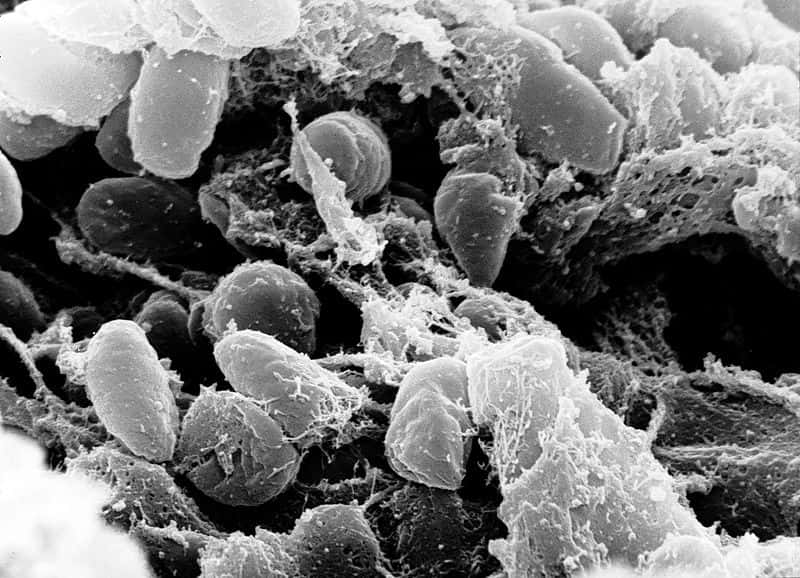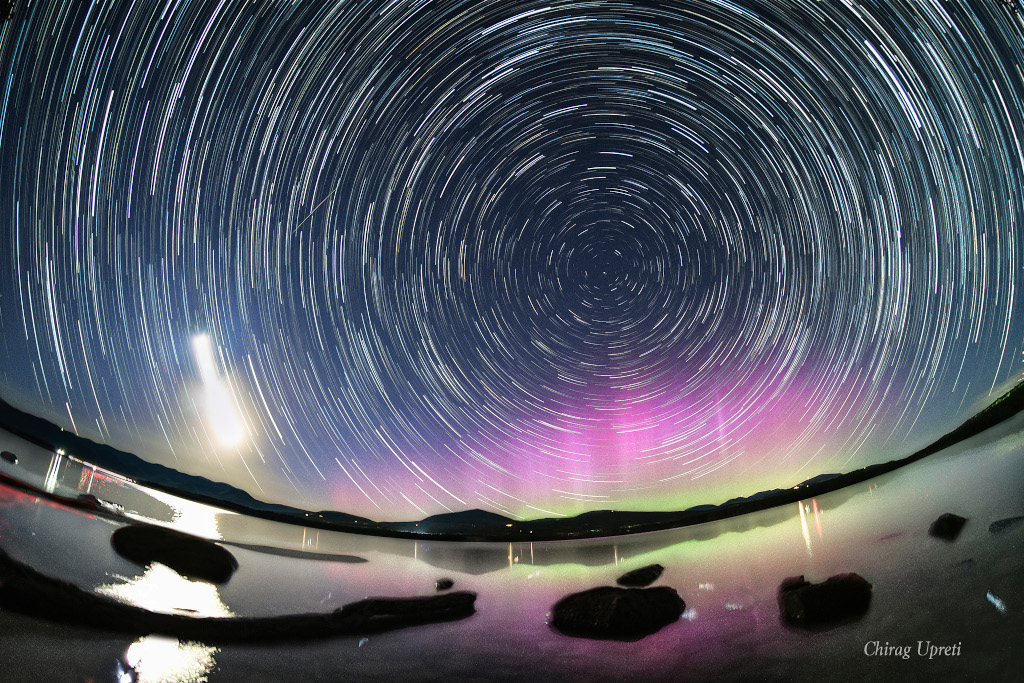Nombre total de pages vues
20/05/2024
SANTé/MEDECINE - Virus et bactéries mortels - Le virus Marburg, une vraie machine à tuer
ASTRONOMY - Aurora Dome Sky
2024 May 20
Image Credit & Copyright: Xuecheng Liu & Yuxuan Liu
Explanation: It seemed like night, but part of the sky glowed purple. It was the now famous night of May 10, 2024, when people over much of the world reported beautiful aurora-filled skies. The featured image was captured this night during early morning hours from Arlington, Wisconsin, USA. The panorama is a composite of several 6-second exposures covering two thirds of the visible sky, with north in the center, and processed to heighten the colors and remove electrical wires. The photographer (in the foreground) reported that the aurora appeared to flow from a point overhead but illuminated the sky only toward the north. The aurora's energetic particles originated from CMEs ejected from our Sun over sunspot AR 6443 a few days before. This large active region rotated to the far side of the Sun last week, but may well survive to rotate back toward the Earth next week.
NUCLEAIRE - Comment survivre à une explosion nucléaire ? Couvrez votre visage
19/05/2024
SANTé/MEDECINE - Virus et bactéries mortels - Yersinia pestis, la bactérie responsable des épidémies de peste
NUCLEAIRE - Comment survivre à une explosion nucléaire ? Les premières 30-45 minutes: protégez votre corps
ASTRONOMY - Jupiter Diving
2024 May 19
Animated Video Credit: NASA, JPL-Caltech, SwRI, MSSS, Gerald Eichstadt, Justin Cowart
Explanation: Take this simulated plunge and dive into the upper atmosphere of Jupiter, the Solar System's ruling gas giant. The awesome animation is based on image data from JunoCam, and the microwave radiometer on board the Jupiter-orbiting Juno spacecraft. Your view will start about 3,000 kilometers above the southern Jovian cloud tops, and you can track your progress on the display at the left. As altitude decreases, temperature increases while you dive deeper at the location of Jupiter's famous Great Red Spot. In fact, Juno data indicates the Great Red Spot, the Solar System's largest storm system, penetrates some 300 kilometers into the giant planet's atmosphere. For comparison, the deepest point for planet Earth's oceans is just under 11 kilometers down. Don't worry though, you'll fly back out again.
18/05/2024
SANTé/MEDECINE - Virus et bactéries mortels - Le virus de la rage
ASTRONOMY - North Celestial Aurora
2024 May 18
Image Credit & Copyright: Chirag Upreti
Explanation: Graceful star trail arcs reflect planet Earth's daily rotation in this colorful night skyscape. To create the timelapse composite, on May 12 consecutive exposures were recorded with a camera fixed to a tripod on the shores of the Ashokan Reservoir, in the Catskills region of New York, USA. North star Polaris is near the center of the star trail arcs. The broad trail of a waxing crescent Moon is on the left, casting a strong reflection across the reservoir waters. With intense solar activity driving recent geomagnetic storms, the colorful aurora borealis or northern lights, rare to the region, shine under Polaris and the north celestial pole.
NUCLEAIRE - Comment survivre à une explosion nucléaire ? À quoi cela ressemblerait ?
17/05/2024
ASTRONOMIE - Astres de la Voie Lactée - Mars
ASTRONOMY - The Observable Universe
2025 November 23 The Observable Universe Illustration Credit & Licence : Wikipedia , Pablo Carlos Budassi Explanation: How far can ...

-
2022 September 26 All the Water on Planet Earth Illustration Credit: Jack Cook, Adam Nieman, Woods Hole Oceanographic Institution ; Data ...
-
2025 May 11 The Surface of Venus from Venera 14 Image Credit: Soviet Planetary Exploration Program , Venera 14 ; Processing & Copyri...








